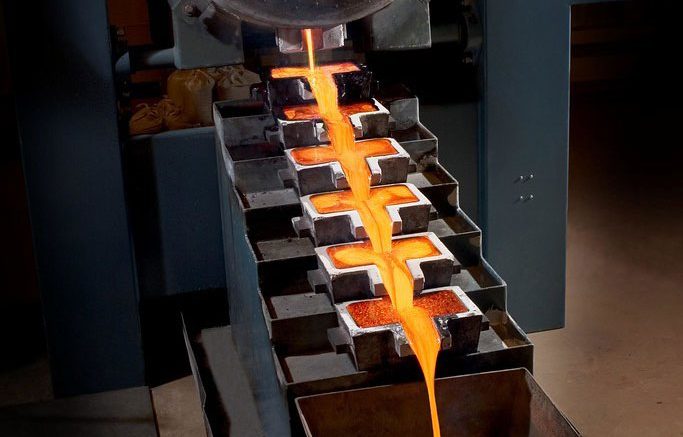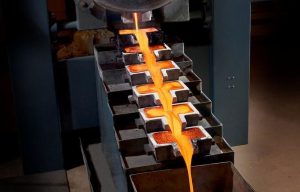Newmont’s five-year outlook sees steady production growth, improving costs


 Gold pour at Newmont's Ahafo project in Ghana Credit: Newmont[/caption]
Gold pour at Newmont's Ahafo project in Ghana Credit: Newmont[/caption]
Gold major Newmont has released a five-year production and costs outlook, which suggests production growth and lower costs through 2025. This most recent guidance, for the first time, includes the Ahafo North and Yanacocha Sulphides projects, which are expected to reach the ‘execution stage’ next year but have not been approved for full funding yet.
With 6 million gold oz. expected this year, the producer sees its gold output growing to 6.5 million oz. next year, followed by between 6.2 and 6.7 million oz. in 2022 and 2023, and increasing to 6.5 to 7 million oz. in 2024 and 2025.
In addition to gold, Newmont anticipates 1.3 million oz. of gold-equivalent ounces (GEOs), 1.2 to 1.4 million GEOs in 2022 and 1.4 to 1.6 million GEOs through to 2025. This year, the company expects 1 million GEOs.
All-in sustaining costs are expected to come in at US$970 per oz. next year, dropping slightly to between US$850 and US$950 per oz. in 2022 and range from US$825 to US$925 per oz. in 2023. AISCs are then expected to drop to US$800 to US$900 per oz. in 2024 and 2025. AISC guidance for this year stands at US$1,015 per oz.
The company expects to spend US$950 million next year on sustaining capital – this amount is expected to grow to between US$900 million and US$1.1 billion over the longer term through to 2025. The development capital guidance for 2021 is US$850 million, and is expected to average US$600 to US$800 million a year through to 2025. This guidance includes development capital for the Tanami Expansion 2, Ahafo North and Yanacocha Sulphides.
The production, cost and capital numbers are based on US$1,200 per oz. gold.
“Newmont’s outlook remains strong and stable as we apply the rigor and discipline of our proven operating model across our world-class portfolio,” Tom Palmer, Newmont’s president and CEO, said in a release. “Our five-year outlook reflects improving production and costs as we continue to deliver value from superior operational and project execution. Our strong financial position allows us to continue investing in profitable, organic growth while simultaneously returning cash to shareholders through our industry leading dividend framework.”
According to the release, the company has an ‘industry-leading dividend framework,’ with an annualized US$1 per share base dividend, with additional returns as gold prices increase. Newmont says it's “on track to return more than US$2.7 billion to shareholders since January 2019.”
The producer’s ESG commitment includes “directing $500 million to climate change initiatives through 2025 targeted to support the reduction of greenhouse gas emissions 30% by 2030.” Newmont’s goal is to reach net zero carbon by 2050.
Looking at the production growth guidance, next year, the Penasquito open pit mine in Mexico is expected to benefit from a full year of production, and the Boddington surface operation in Australia is scheduled to reach higher copper grades. By 2022, Boddington output is expected to increase with higher copper grades.
The capital projects pipeline includes the Tanami Expansion 2 in Australia, which would add a 1,460-metre shaft and infrastructure at the underground site, to increase average annual gold production by 150,000 to 200,000 oz. a year for the first five years and lower operating costs by 10%.
In Africa, the Ahafo North project would expand the company’s footprint in Ghana with four additional open pits and a mill, 30 km of the existing Ahafo South operations. With an investment decision expected in the first half of next year, the development would add 300,000 gold oz. a year at AISCs of US$600 to US$700 per oz. in the first five years at estimated capital costs of US$700 to US$800 million.
The Yanacocha Sulphides development in Peru would develop the first phase of the sulphide deposits and add a processing circuit with an autoclave to process gold, copper and silver feed. The project would add 500,000 GEOs a year at AISCs of US$700 to US$800 per oz. in its first full five years of operation. With a capital cost estimated at US$2 billion, an investment decision is expected next year, with a potential three-year development period and first copper production by 2025.
For more information, visit www.Newmont.com.
Comments